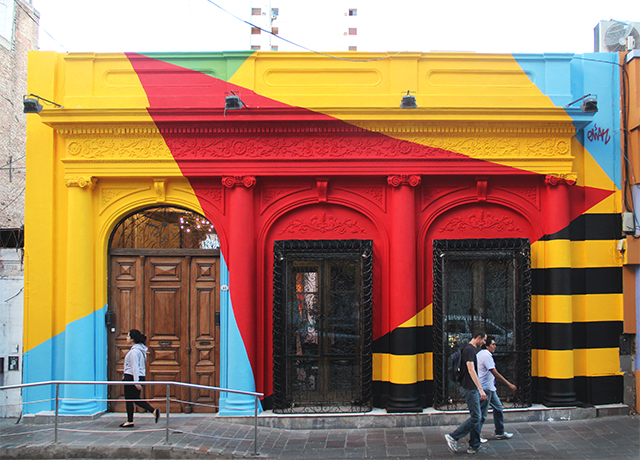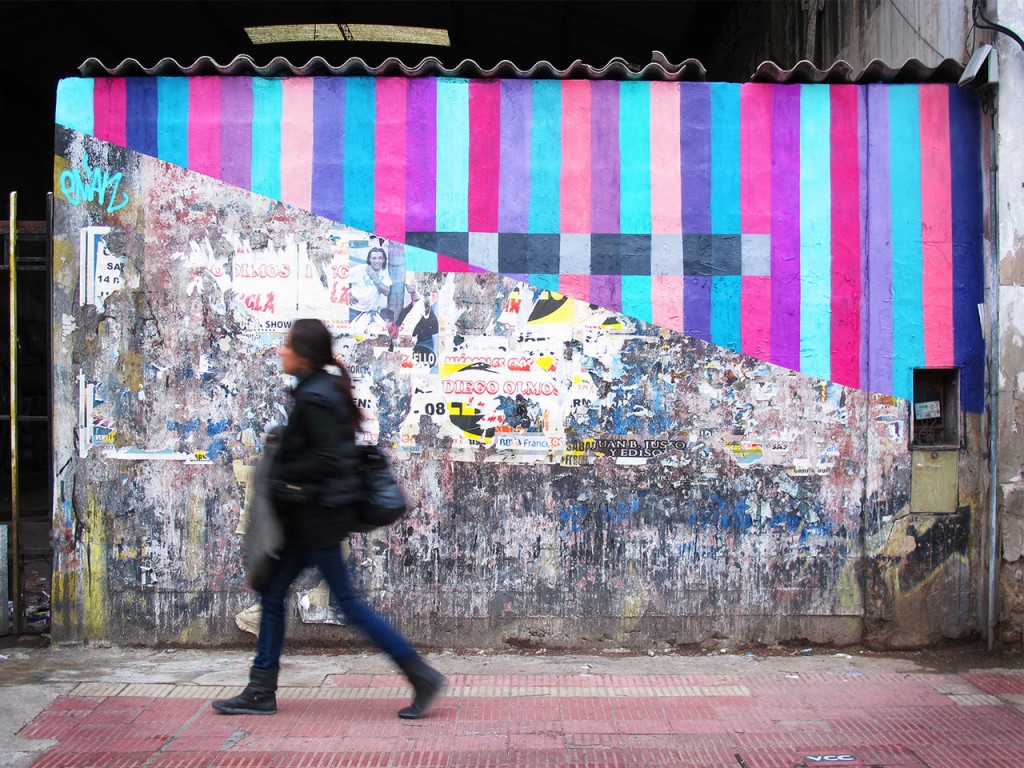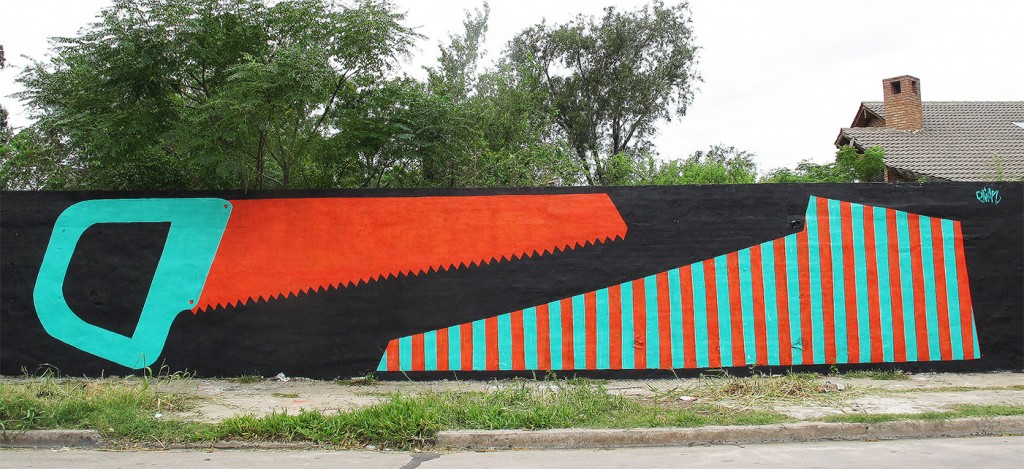
Last year, while I was working with Living Walls at Miami Art Basel I had the pleasure of talking to Elian about the politics of graffiti, art, and public space. I was intrigued by how he presented his world and relationship with street art in Córdoba, Argentina. I decided to pick up where we left off a few months ago…
Laura: Let’s start with the basics, shall we? What influences and inspires your work?
Elian: My influences exist in everyday events, ordinary moments; one can grow from what’s reachable.

Laura: We spoke once about the difficulties of maintaining an art movement in a city like Córdoba, why do you think this phenomena occurs, what characteristics does Córdoba hold that puts it in this situation?
Elian: The characteristic that puts Córdoba in this situation is mainly due to cultural politics. Córdoba is a city that has always been traditional and conservative in terms of artistic expression, and like any second (or third) city in a country, state funding don’t necessarily go towards promoting subcultures or developing movements; the state’s budget goes towards cultural tourism and known entities like museums, cultural centers, historical districts, cultural patrimony, etc. But, I love being having the ability to break those parameters, it is not an easy task; on the upside, it gives room to do self-realized work without the dependency of any outside governmental entity, or any organization or business. And I prefer it that way.

Laura: What’s new in the street art movement in Córdoba?
Elian: Street art in Córdoba, like many cultural and artistic movements, is totally unpredictable… At times it grows and then suddenly it slows down. For now, artist that develop their skill in public space, or graffiti writers, or simply emerging artists and those who are self-taught, have been given more opportunities in spaces that traditionally were not available; for example art galleries, cultural centers, etc. On a personal note, I believe that the opening of Kosovo Gallery has pushed this phenomenon towards artists that have crossed the street in their line of work; the gallery has offered a space where more attention is brought to this form of expression.

Laura: Tell us about your process, what do you look for in a wall? What do you see in a space before you tweak it up?
Elian: In regards to my work, physical structure is essential. Since I began to paint in the streets (approximately 10 years ago) my preferences have gone through many incredible transformations. Before, I preferred a space with a lot of visibility, a clean wall with a perfect surface. Currently I appreciate a lot more a wall that has been dishonored through the passing of time, crumbled by neglect in a neighborhood. Also, spaces that offer a variety of naturally occurring textures, walls made out of a particular material, molds and other architectural factors that generate movement with the geometry that I offer in my works. Selecting walls will always be attached to the richness of the work; today a wall in perfect condition does not say much to me.

Laura: What’s your preferred platform to execute your work in?
Elian: I feel that this is connected to the surroundings. Today, I want to work in a place that is missing something, a peripheral neighborhood. I want to be able to transform the mood in a plaza, to be able to affect a person’s day to day life in a positive way… Places where electoral (political) façade doesn’t necessarily reach, those communities that the state ignores.

Laura: What’s your next move? What should we look forward to in your work?
Elian: As far as Elian goes… what you should expect is constant mutation, change. I think that what interests me the most about art is exactly that curiosity that is ignited; learning and searching towards a deeper theory and craft.
Photos courtesy of Elian
